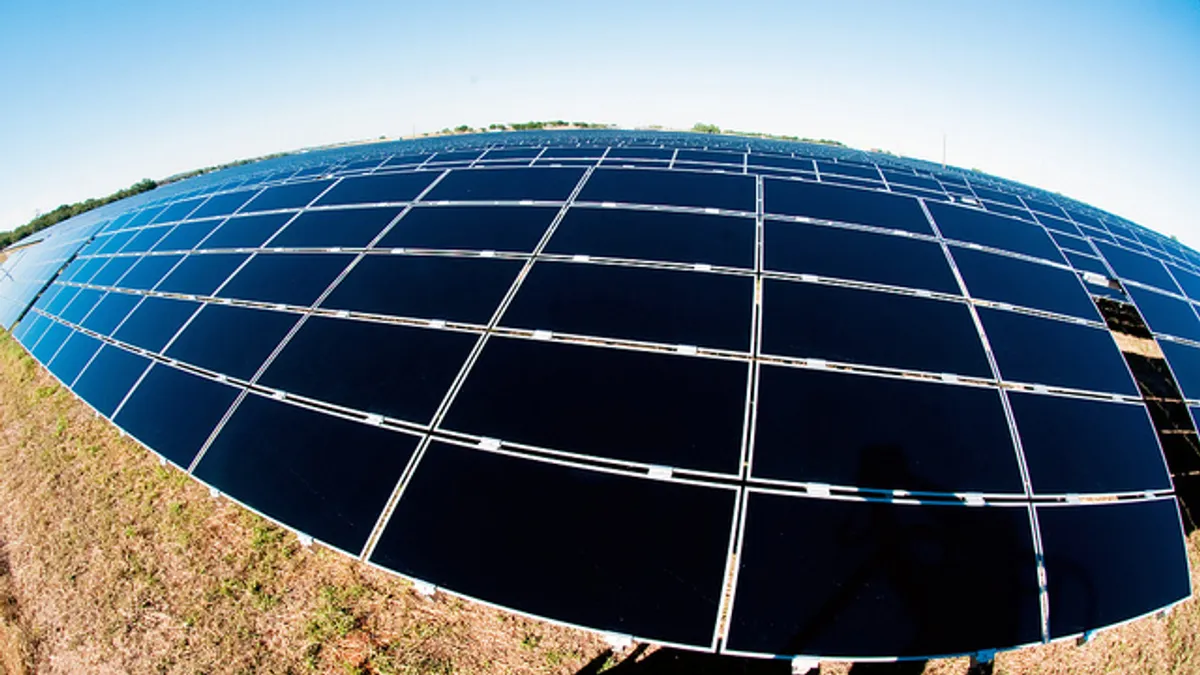Dive Brief:
- The Department of Energy has released eight update reports detailing the progress of its SunShot Initiative at the end of 2015, the midpoint of DOE's effort to make the installed cost of photovoltaic (PV) solar competitive with conventional generation by 2020.
- On the Path to SunShot shows the installed price of utility-scale solar without incentives has fallen 70% in the Initiative’s first five years, from $0.21/kWh to $0.11/kWh, as programs drive toward DOE’s $0.06/kWh goal.
- The new challenges described in the DOE papers focus on high penetrations of utility-scale wind and solar feeding into the transmission system, and on increasing two-way power flows from rising penetrations of distributed energy resources (DERs) on the distribution system.
Dive Insight:
At the midpoint of its SunShot Initiative, the Department of Energy has released a slate of reports detailing the progress and continuing challenges for solar power in the United States.
The first report covers challenges with integrating high levels of solar into transmission systems. It examines the threat of over-generation and calls for more system flexibility, energy storage, and rates that send price signals.
The second report covers challenges with integrating high solar penetrations into the distribution system. It suggests advanced inverters and voltage management solutions could resolve barriers and cost effectively double the system hosting capacity for PV.
The third paper finds greater PV efficiency and reliability are needed to bring the levelized cost of solar generation down 40% to 50%.
A fourth paper looks at how concentrating solar power can take advantage of the capability to store the sun’s heat for later dispatch to make the technology more cost-effective and give it a critical role in grid operations by enhancing the system’s ability to balance supply and demand.
And a fifth report goes into utility regulation, utility business model reforms, and the financial impacts on utilities of distributed solar.
Three other reports look into the opportunities and challenges in the areas of solar manufacturing, solar finance, and environmental and public health benefits high solar penetrations.














